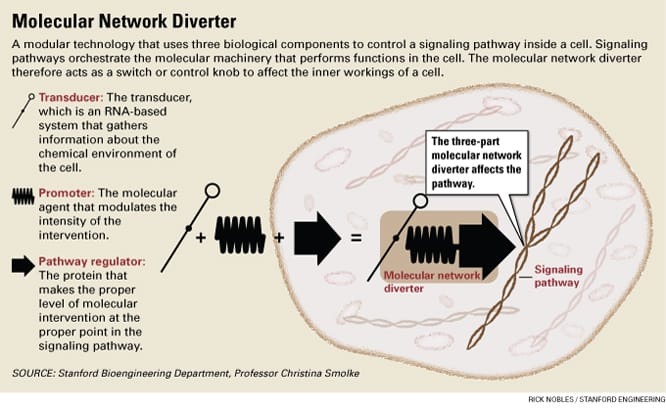Researchers “Turn On” Yeast Cells for Mating with the Flip of a Switch

Researchers at a Stanford Bioengineering laboratory have devised a molecular switch that can be used to control signalling pathways in cells. The switch they call “molecular network diverter” is a combination of three biological sub-systems found inside the cells.
The molecular network diverter has a transducer, a promoter and a pathway regulator as its components. The RNA based transducer is responsible for collecting information about the chemical environment in a cell and its surroundings, while the promoter helps in initiating and controlling the gene expression and the pathway regulator is responsible for intervening in between the signalling pathways after identifying appropriate points. All the three elements are put together using computational modelling, with the chemical components fine tuned to build a working molecular network diverter.
They have successfully used this molecular network diverter in yeast cells to interfere with the signalling pathways controlling cell development, reproduction and death, in order to induce or inhibit cell mating in yeast cells irrespective of pheromone activity, which is otherwise essential in nature for cell mating. The molecular network diverter can be designed and used in cells of higher organisms like humans and other animals as their pathways are similar to that of yeast in many ways
The team is working on implementing this technology in human cell cultures and if they are successful, this may lead to the development of new techniques for treating various types of cancer and other diseases caused by malfunction of signalling pathways. Further information is available here.
Source: Stanford University

